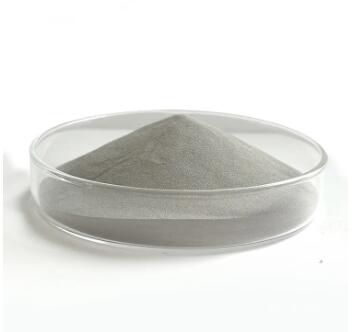Understanding Spherical Niobium Hafnium Alloy Powder C103: Composition and Applications
2024-08-12
Spherical niobium hafnium alloy powder, specifically C103, is a unique material widely used in aerospace, nuclear, and other high-performance applications due to its exceptional properties. This blog delves into the composition, characteristics, and key applications of C103 to provide a comprehensive understanding of its role in advanced industries.
1. Composition of C103 Alloy
C103 is a niobium-based alloy primarily composed of niobium (Nb), with hafnium (Hf) and titanium (Ti) as major alloying elements. The typical composition includes:
- Niobium (Nb): ~89%
- Hafnium (Hf): ~10%
- Titanium (Ti): ~1%
This specific blend of elements gives C103 its remarkable properties, including high melting point, excellent strength, and resistance to corrosion and oxidation.
2. Unique Properties of C103 Alloy
The combination of niobium, hafnium, and titanium in C103 results in a material with several exceptional properties that make it ideal for demanding environments:
- High Melting Point: C103 has a melting point of approximately 4,350°F (2,400°C), making it suitable for use in extreme temperature conditions, such as in aerospace applications where materials are exposed to intense heat.
- Excellent Strength-to-Weight Ratio: Despite its high strength, C103 is relatively lightweight, which is crucial in industries like aerospace where reducing weight without compromising strength is essential.
- Corrosion and Oxidation Resistance: The alloy's resistance to corrosion and oxidation ensures durability and longevity in harsh environments, such as in chemical processing or nuclear reactors.
- Good Weldability: C103 can be easily welded, which is a significant advantage in manufacturing complex components that require precision and durability.
3. Applications in Aerospace and Beyond
Due to its unique properties, C103 is extensively used in the aerospace industry, particularly in the manufacturing of rocket nozzles, turbine blades, and other high-temperature components. However, its applications extend beyond aerospace into other high-performance sectors:
- Rocket Propulsion Systems: C103 is widely used in rocket nozzles and other components of propulsion systems due to its ability to withstand extreme temperatures and its excellent strength.
- Gas Turbines: The alloy's resistance to high temperatures and oxidation makes it ideal for use in gas turbine engines, where materials are subjected to intense heat and stress.
- Nuclear Reactors: In the nuclear industry, C103 is used in components that require high resistance to radiation and corrosion, ensuring safety and longevity.
- Chemical Processing: The alloy's corrosion resistance makes it suitable for use in chemical processing equipment that operates in aggressive environments.
4. Advancements in Spherical Powder Form
C103 in spherical powder form offers additional advantages for additive manufacturing (AM) and other advanced manufacturing processes:
- Enhanced Flowability: The spherical shape of the powder particles ensures better flowability, which is crucial for consistent and high-quality additive manufacturing processes.
- Improved Density and Strength: Spherical powders typically result in denser and stronger final products, making them ideal for critical applications.
- Versatility in AM Processes: Spherical C103 powder is compatible with various AM techniques, including selective laser melting (SLM) and electron beam melting (EBM), allowing for the production of complex, high-precision components.
Conclusion
Spherical niobium hafnium alloy powder C103 is a remarkable material with a unique combination of properties that make it indispensable in high-performance industries. From aerospace to nuclear reactors, its applications are vast and varied, driven by its exceptional strength, resistance to extreme temperatures, and corrosion resistance. As manufacturing technologies continue to advance, C103 in spherical powder form is set to play an even more critical role in the development of cutting-edge components and systems.



